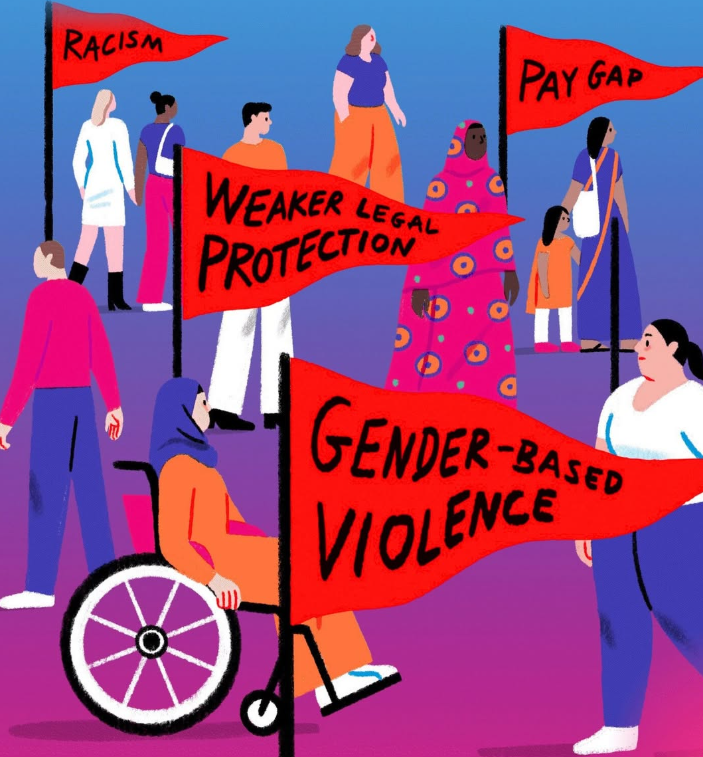March 8th and the Protection of Women's Rights

International Women's Rights Day is an opportunity to reflect on the persistent gender inequalities and the challenges that still remain in 2025. Economic, political, and social dynamics continue to reveal structural disparities that hinder the full recognition and effective protection of women’s rights. An analysis of data and current regulations shows how gender discrimination remains deeply rooted and requires an integrated approach based on scientific evidence and supported by adequate legal instruments.
Gender-based violence, particularly domestic abuse and femicide, constitutes a serious social emergency. According to recent studies, the social cost of violence against women in Italy has been estimated at approximately 17 billion euros. This figure includes both direct costs (such as healthcare, judicial, and welfare) and indirect costs (including loss of productivity and reduced well-being of victims) (ISTAT, 2023). Despite the severity of the phenomenon, resources allocated to prevention have been significantly reduced. In 2023, government funding for preventive measures was reduced by 70%, falling from 17 million euros to 5 million euros (ActionAid, 2023), thereby compromising the effectiveness of intervention strategies.
The Istanbul Convention, ratified by Italy in 2013, obliges states to ensure adequate resources are allocated for the prevention of violence and protection of victims (Council of Europe, 2011). The failure to implement structural measures and the insufficient funding for anti-violence centres undermines the effectiveness of existing policies. Strengthening legal protection mechanisms, alongside adequate funding for support institutions, is essential to ensure an effective and timely response to gender-based violence.
Despite the increase in the number of employed women, female participation in the labour market in Italy remains significantly below the European average. In 2024, the female employment rate reached 53%, compared to an EU average of 69.3% (Eurostat, 2024). The main factors contributing to this gap include job insecurity, occupational segregation, and the difficulty of balancing work and family life.
The gender pay gap remains a persistent issue: in Italy, women earn on average 10% less than men, with disparities ranging from 3,000 to 16,000 euros annually depending on the sector and professional level (INAPP, 2024). Barriers to promotion and limited access to leadership roles further contribute to this gap, with only 13% of top positions held by women.
At the regulatory level, EU Directive 2023/970 on pay transparency requires companies to adopt measures aimed at eliminating wage inequalities (European Parliament, 2023). Its effective implementation requires a concrete commitment from member states, which must strengthen monitoring mechanisms and enforce sanctions against non-compliant companies.
Another crucial aspect of gender inequality relates to health and access to healthcare services. Medical research has historically privileged the male body as the default reference model, with negative consequences for women's health. For example, heart attack symptoms in women are different from those in men, but for decades clinical research has neglected these differences, increasing the risk of delayed or inaccurate diagnoses (Criado-Perez, 2019).
European regulations on gender equality in scientific research require the inclusion of sex and gender differences in clinical trial protocols (European Commission, 2022). However, their implementation remains limited, and gender-sensitive medicine struggles to establish itself as both an academic discipline and a standard practice.
Wars and armed conflicts further exacerbate the living conditions of women. In many conflict zones, women are victims of systematic sexual violence used as a weapon of oppression and terror (UN Women, 2023). The situation of Afghan women is emblematic: after the Taliban takeover in 2021, women's rights have been progressively dismantled, with the ban on access to higher education and increasingly severe restrictions on their freedom of movement and social participation (Human Rights Watch, 2024). The international community must address these serious violations with targeted interventions and strengthening international protection mechanisms.
Language plays a central role in perpetuating inequalities. The use of expressions that downplay gender-based violence or frame femicides as acts of passion contributes to a cultural narrative that justifies and normalises violence. Expressions such as "crime of passion" or "fit of jealousy" obscure the structural roots of violence against women and prevent a full understanding of the power dynamics that generate it (Giacomini, 2022). Greater awareness of the use of language is essential to dismantle harmful narratives that legitimise inequalities.
Ecofeminism offers an integrated vision of gender justice and environmental justice. Women – often at the forefront of protecting the environment and natural resources – disproportionately bear the impacts of the climate crisis. The link between environmental degradation and patriarchal violence suggests the need for policies that promote sustainable peace and a regenerative economy, recognising the value of women's contribution to building a more equitable and nature-respecting world (Shiva, 2016).
The analysis of data and policies shows that gender equality remains a distant goal. The protection of women's rights requires ongoing commitment, based on an integrated approach that brings together scientific research, legislative action, and effective public policy. Reducing inequalities is not only a matter of social justice but also a necessity for the country's economic and democratic progress. Education and training that promotes an inclusive culture are essential to ensure structural and lasting change. Gender is just one of the multiple diversities that must be recognised and valued in a system that embraces the plurality of human identities and experiences.

